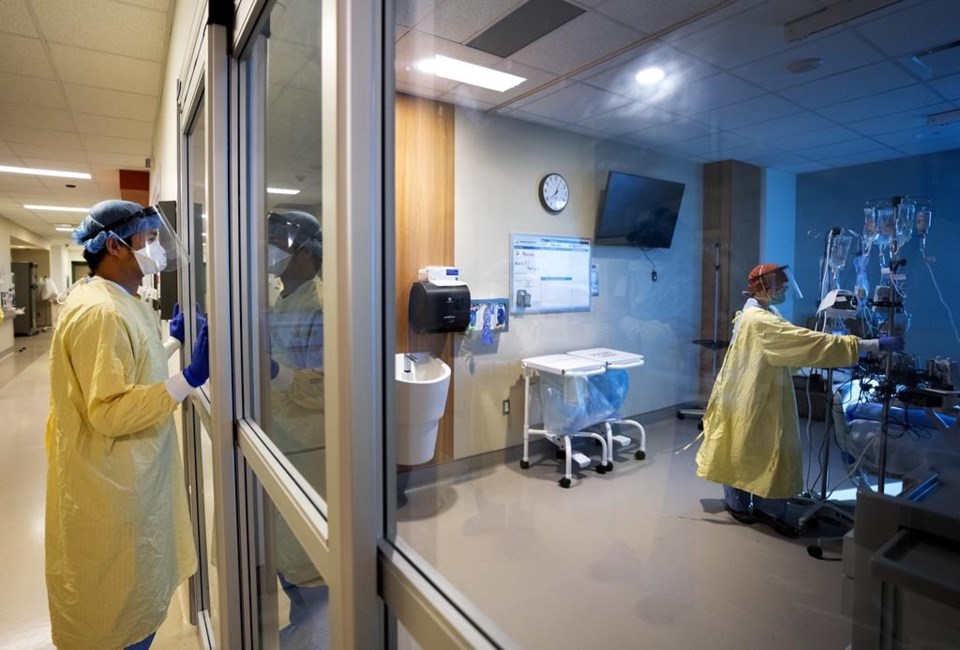TORONTO ŌĆö Members of Ontario's outgoing science table say they would have advised against the province's decision to scrap its mandatory isolation period for COVID-19 if they had been consulted on the move.
Chief Medical Officer of Health Dr. Kieran Moore said Wednesday that those who test positive for COVID-19 no longer need to isolate for five days, an approach he referred to as "practical and pragmatic."
Under new guidelines, people should stay home until their fever clears and their symptoms have improved for at least 24 hours but they should wear a mask "in any setting" for 10 full days and refrain from going into high-risk settings such as long-term care homes during that time.
Dr. Fahad Razak, the scientific director for the province's science table ŌĆō which is set to be dissolved by the government next week ŌĆō said the group did not officially assess the government's decision to drop the isolation requirement, though they haven't always been consulted on pandemic measures.
He disagrees with the move, noting it could put further strain on Ontario's health-care system which has seen emergency departments close for hours or days at time this summer largely due to staff shortages.
"I'm seeing significant risk in the health-care system and a wave that has not receded to the extent that we would like," he said.
"I'd like to see the public health measures remain at least as strong as they are."
Razak, a University of Toronto professor and an internist at St. Michael's Hospital, favours more stringent measures such as masking indoors.
The province is still in the midst of a seventh wave, though it has already plateaued, Moore said this week. Earlier this month, Moore had said the seventh wave had peaked.
Ontario's previous wave, by comparison, peaked and then fell.
COVID-19 wastewater signals have seen a slight uptake as of late and schools across the province are starting a new school year next week without COVID-19 restrictions for the first time since the pandemic began.
Those factors combined with an expected rise in COVID-19 cases and a return of other seasonal respiratory viruses as the weather gets colder is setting the stage for what could be a challenging fall and winter.
"Millions of kids across the country will be now coming into these indoor settings and that is a setting where viral spread will become easier to occur," Razak said.
In announcing the end of mandatory isolation, Moore said better ventilation and environmental cleaning in schools, combined with the level of immunization across Ontario, mean "we now can have a more permissive approach to return."
Dr. Gerald Evans, a science table member who also teaches at Queen's University, said it's far too early to lift the isolation rule.
"This is not a way to handle the pandemic at this point," Evans said. "I think it's being led by some very, very simplistic thinking."
It has been a rough winter for COVID-19 in the Southern Hemisphere, he said, and data emerging from the United States, where most schools have already started, are seeing a "tremendous rise" in cases.
"The problem that I have with lifting the isolation rule is that knowing this is likely to happen here," he said.
The province is also moving away from COVID-19-specific guidance in favour of an "all-virus approach," Moore said. That means the latest guidelines apply to other illnesses like the flu and lung infections from the respiratory syncytial virus.
Evans said that approach is problematic because the viruses are all different, with their own contagious periods.
"It's way too early for this sort of approach to COVID with the flu season coming up and it underscores a generalization that all respiratory viruses are kind of the same and that's just not true," he said.
Dr. Douglas Manuel, another member of the science table, said taking away the isolation period will only hurt the health-care system.
"We're not really in a good position," Manuel said.
"We're going to have waves where a lot of people get sick quite quickly, so absenteeism and being able to maintain staffing in hospitals and schools and airports and other essential services."
Public Health Ontario reported Thursday that 72 people died from COVID-19 between Aug. 21 and 27, up from 62 the week before.
Manuel said deaths will rise, as they have in other waves, as the virus seeks out the most vulnerable.
"We really just need to have a discussion in society about what level of risk we want to tolerate and what level of deaths we want to tolerate," he said.
"It's not really a decision for Dr. Moore, it's not a decision for science table, it's more a decision for all of us to figure out what the future looks like."
The science table said last week it had been informed by Public Health Ontario that it would be dissolved as of Sept. 6. The group, made up largely of volunteers, gave advice to the government for much of the pandemic.
Public Health Ontario says the new table, for which terms of reference were published Thursday, will be independent, but it won't have final say on what it can investigate
The new table is set to have its first meeting sometime in October, and will be made up of 15 core members external to Public Health Ontario.
This report by The 91įŁ┤┤ Press was first published Sept. 2, 2022.
Liam Casey, The 91įŁ┤┤ Press



